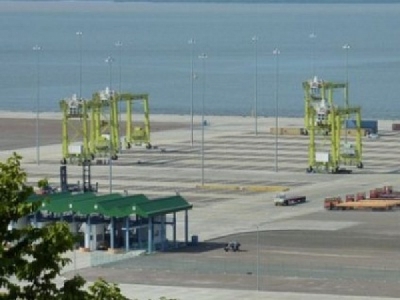
Posted on October 20, 2016
By Gavin van Marle, The Loadstar
The Panama Canal expansion has raised fears that the container terminal industry in Latin America and the Caribbean could be heading for profound overcapacity, while terminals have been urged to rethink their position in supply chains.
At last week’s TOC America Container Supply Chain event in Cancun, Giovanni Benedetti, commercial director of the Sociedad Portuaria Regional de Cartagena (SPRC), owner and operator of one of the region’s most important container hubs, said that with the arrival of larger ships in the region came increased risks for terminal operators.
“There is all this talk of idle ships needed to readdress vessel overcapacity, but what about idle terminals?” he asked.
“Throughout the region there are terminals that have been built which have remained unused – Ponce in Puerto Rico and La Union in El Salvador are two examples,” he said.
However, many ports have been forced into a new round of investment by the Panama Canal expansion.
Charles Baker, director general of TC Mariel, a new facility under construction in Cuba, said US east and Gulf coast ports had a combined $8.6bn of infrastructure investments under way – much in dredging programmes to ensure access and navigation channels can accept larger vessel sizes – “just to stay in the game”.
Michael Kristiansen, owner of the CK Americas consultancy, added: “There is no guarantee that these ports will necessarily get a return on these investments – the first new service announced into Miami after the port had completed its $1bn dredging programme was an MSC string that was using old panamax vessels that could have called there without the deeper channels. So was it worth it?”
SPRC’s Mr Benedetti similarly questioned the logic behind construction of new capacity on the west coast of South America.
“Most of the development going on in the Pacific coast of Panama and at Buenaventura in Colombia is for cargo which originates out of Guayaquil in Ecuador,” he said. “But DP World is also building a 1.5m teu capacity terminal Guayaquil itself, so there is a risk that a lot of the development is being duplicated.
“One way to offset that risk is to partner with a shipping line – but that comes with downside too. You could well upset your other liner customers and risk being stuck with just one carrier,” he said.
Mr Kristiansen added that building so-called “white elephant” port projects could also set back a country’s entire port development programme.
“In the case of La Union in El Salvador, there is a massive difference in distance from there to San Salvador compared with to Acajutla, the country’s existing maritime gateway. Additionally, there’s just nothing down there.
“There was a dream of developing tourism and manufacturing; nothing came of it but the country went ahead and built the port with a $200m soft loan from the Japanese development bank.
“There was no downside risks for the guys who built it because by the time it was completed the government had changed. It is the future generation that has to pay that loan back and has an asset that comes with considerable extra costs because of the extra distance to the capital. And if that extra cost is, say, $300, then that port has to deliver $300 in benefits that can mitigate that extra cost – and it can’t.”
He added: “There is also the fact that by holding onto La Union no one will get on with modernising Acajutla, which urgently needs to be privatised.”
Nonetheless, a whole range of ports in the Caribbean are also investing, in the hope that the expanded Panama Canal will result in a shift of transhipment business, as volumes destined for the US eastern and mid-west regions could be rerouted from their current west coast gateways.
Mr Baker said estimates were that the US west coast ports could lose 10-20% of their throughput as shippers took advantage of the larger vessels transiting Panama to redesign their supply chains.
“The southern part of the US has the fastest rate of population growth, and there’s a great opportunity for ports to capture more cargo. That should extend to the Caribbean ports which will act as transhipment hubs to handle larger vessels.
“Mariel port is right on the arc that Asia-US east coast services will travel on their headhaul passage, and we see ourselves as well positioned for US Gulf and Atlantic coast ports that might not be neo-panamax ready.
“Similarly, Kingston is ideally located as a central transhipment hub for Caribbean services; while on service between Latin America Europe Caucedo may be a more natural hub,” he said.
Source: The Loadstar





